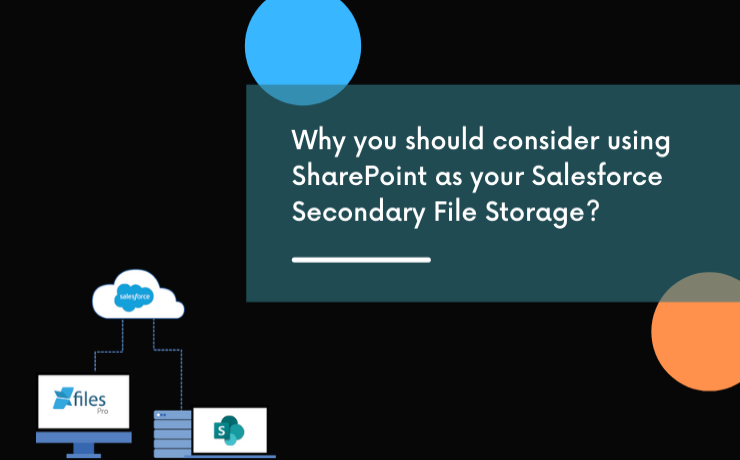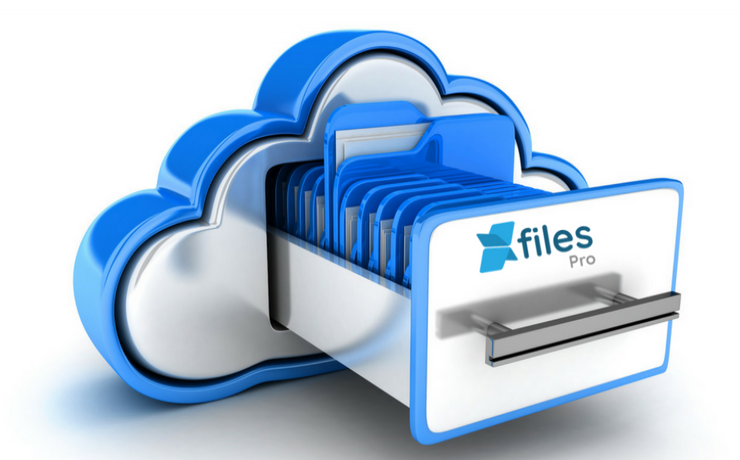
Last Updated: September 22, 2023
In today’s world of digitalization, businesses often find different strategic methods to improve their customer relationships & data management process. In the pursuit to achieve these goals, companies adopt multiple technology platforms. Salesforce is one such innovative platform that enterprises use to manage their sales, service, and marketing processes in order to optimize marketing campaigns, maximize lead acquisitions, minimize sales cycles, deliver top-grade customer service, and maintain long-term customer relationships.
With a growing business, every enterprise encounters faster data growth, and managing a large volume of data efficiently is becoming a key differentiator. When you have a big team operating from multiple locations, managing critical business information with easy access and seamless collaboration often becomes cumbersome. Salesforce as a platform can significantly accelerate sales & boost customer service workflows. However, when it comes to document management, there are certain limitations as this is not a part of Salesforce’s core capabilities. In order to optimize their document management process & get the best results, enterprises usually look for alternative platforms that can help them accomplish this. And what can be better than SharePoint?
Understanding SharePoint
SharePoint is one of the leading document management & storage platforms. Powered by Microsoft, SharePoint offers organizations an advanced, highly configurable, and relatively cost-effective document storage & collaboration platform. Through its cloud-based application SharePoint Online, & the in-house application SharePoint On-premise, SharePoint has a user base of over 100 million worldwide.
Top 5 Benefits of SharePoint for Document Management
Managing documents using SharePoint is a smart choice considering the powerful capabilities of the tool. SharePoint can easily make your entire document management process automated, organized, and efficient. Let’s have a look at the top 5 benefits of using SharePoint for document management.
Collaboration
A large number of users can collaborate on single or multiple documents at the same time with ease. This is one of the most popular SharePoint features. Collaboration helps faster turnarounds & increased productivity.
Flexibility
SharePoint offers one of the most flexible & configurable platforms. The tool can be easily integrated with any external system & businesses can also customize it as per their business requirements.
Security
Microsoft has properly taken care of the security aspect of this tool. Documents can be stored safely with access controls, view restrictions, and robust servers.
Version Control
SharePoint’s file versioning capability allows the admin or owner to maintain a proper version history in an easily accessible location. This is very much required when a large number of users collaborate on files as every change is captured & saved separately with an audit trail. This makes SharePoint secure also.
Better Accessibility & Easy Retrievals
SharePoint offers seamless accessibility to the files through an easy-to-use UI along with a modern search feature. Users can find files easily with a faster retrieval process.
Also Read: Document Management in Salesforce: A Brief Introduction to its Best Practices
SharePoint for Salesforce Document Management
As we already mentioned in this blog, Salesforce is not built for document management as it is not coming under its core purpose, just like SharePoint can not manage customer relationships. Both platforms are built for different business objectives & integrating both will do wonders for a business.
Joint customers of Salesforce & SharePoint can leverage both these platforms to transform two of their most critical business processes i.e. running business processes such as sales, marketing, and service on Salesforce by managing all the business information on SharePoint. This integration makes more sense as Salesforce offers minimum storage to keep files, while SharePoint can manage massive volumes of files with ease & also in a highly cost-effective way.
Benefits of using SharePoint to Store Salesforce Files
Integrating Salesforce & SharePoint offers a plethora of benefits for the joint customers. Customers can have a powerful integrated CRM & Document Management System, which allows them to manage their sales, and service processes better while keeping all the files in a centralized location. Let’s have a look at some of the key benefits of connecting Salesforce with SharePoint.
Cost Savings
As you might know, Salesforce allows a limited volume of files (10 GB) to be stored in its system & every time customers go for storage upgrades, this results in high additional costs. Storing Salesforce files in SharePoint will definitely reduce massive storage costs & sales/service agents can work more efficiently without facing storage or performance issues. SharePoint offers 1TB of storage space excluding 10GB storage per license purchased.
Managing Large Size Files
SharePoint can manage large-size files with ease (50 MB) which is a big challenge in Salesforce. So, Salesforce users can upload files of larger sizes & experience hassle-free document management.
Better File Collaboration
SharePoint is favorably popular for its robust document collaboration capabilities. Moving Salesforce files to SharePoint will allow users to collaborate on files without any crises.
Organized File System
As Salesforce doesn’t offer any kind of folder structure to keep files, moving documents to SharePoint allows customers to organize files under specific folders as folders can be created in SharePoint. This will improve user experience as well as file accessibility.
Better Document Management
As Salesforce is not a document management system, when integrated with SharePoint, all the SharePoint document management features can be applicable to Salesforce files as well. This includes versioning, access control, unified search, document approvals, sharing, etc. This definitely allows Salesforce users to leverage a world-class document management system.
How to Integrate Salesforce with SharePoint for Document Management?
There are multiple ways to integrate both Salesforce & SharePoint for document management. However, most of the organizations adopt one method among the below three.
- Files Connect
- Custom Application
- AppExchange Application
Salesforce Files Connect can be used to set up an integration between both platforms. However, this has certain limitations in terms of features & functionalities. Building a custom app in-house can do the job, however, this can be expensive and time-consuming. Custom applications will never give you capabilities beyond basic requirements. The third option is finding a ready-to-use application from AppExchange. Salesforce offers thousands of enterprise-grade applications through its AppExchange platform built & maintained by third-party vendors.
XfilesPro for Salesforce & SharePoint Integration for Document Management
XfilesPro is one of the most popular & advanced file management applications for Salesforce available on the AppExchange that can help you integrate both your platforms (Salesforce & SharePoint) in simple clicks & quick steps. The application not only enables easy & automated Salesforce file storage in SharePoint but also offers multiple in-built features to deliver you a world-class file management experience within Salesforce.
Also read: How to Store Salesforce Files in External Storages using XfilesPro: Steps to Follow
With XfilesPro, Salesforce users can;
- Offload a large number of files to SharePoint
- Move files from Salesforce to SharePoint in real-time
- Organize files in SharePoint using template folders or custom folders
- Automatically sync files between both systems
- Move files from 3rd-party Salesforce apps or community portals to SharePoint
- Tag files in SharePoint
- Manage files in multiple SharePoint sites
- Manage all files in the Salesforce1 mobile
Explore all the features here.
Still wondering how to get started with XfilesPro to integrate both your Salesforce & SharePoint platforms for a top-grade CRM & document management experience, request a demo now.

XfilesPro is a complete document management application built for Salesforce that offers end-to-end document management solutions including doc gen, eSignature, document storage & collaboration.
